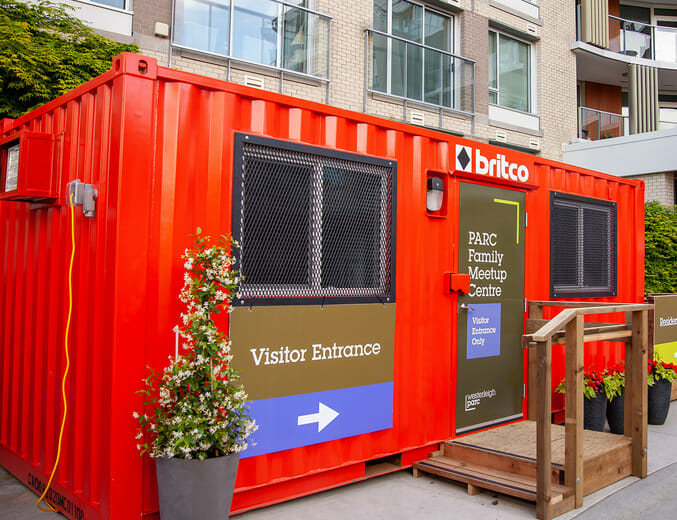How the Modular Building Industry Responded to COVID-19: Other Spaces
Modular companies have provided space to address physical distancing, homelessness, and social isolation.
Physical distancing reduces the spread of COVID-19. In many cases, to allow employees to maintain physical distance, extra space is needed.
‘Stay at home’ is important advice that most of us have been able to follow. The homeless population can’t, though. Some jurisdictions have responded by providing temporary accommodation. But others have decided to tackle homelessness for the long term.
Another population that’s especially vulnerable to COVID-19 are older adults in nursing homes. Physical distancing is important for this group, but social isolation is a serious risk.
Accommodations and Visitation Centers
“Some defense and government clients needed to house people closer to their sites,” says Toby LaBrie, Executive Vice President and Chief Financial Officer of Black Diamond Group. “We’ve provided large format accommodations for them.”
The company has also mobilized temporary workforce accommodation in the Canadian Prairies for a government organization. And they’ve provided “additional space so employees can maintain physical distancing” says Regional Manager at Britco, Christoph Neufeld.

These temporary Family Meetup Centre buildings look like regular office trailers from the outside; however, the interior looks and feels like a customized, comfortable, virus-proof safe visitation space.
They also developed a product to tackle the problem of social isolation during the pandemic. It allows people to safely visit loved ones who live in nursing homes.
“We’ve converted some of our units into special visitation buildings for seniors’ homes. The residents can meet their families in a way that both are protected,” says LaBrie. “A plexiglass wall divides each unit, and residents go in one end, and visitors go in the other. They can visit and see each other, and although it’s not as good as being able to hug, it’s better than a Zoom call!”
Physical Distancing and Housing
Horizon North has also provided space for physical distancing. Co-Chief Executive Officer of Horizon North Logistics, Rod Graham, gives one example. “The Louis Bull First Nations group acquired some of our rapid response gear to allow for more physical distancing on their reserve just north of Red Deer, Alberta.”
But the projects that Graham is most excited about are those that will provide permanent housing.
“Some forward-looking jurisdictions are working to flatten the curve now,” Graham says. “But they’re also providing safety and dignity in the long term for folks who perhaps aren’t getting the same level of attention during this pandemic. They’re looking beyond the pandemic and saying, ‘We can make a real difference now’.”
Providing housing for the homeless and other vulnerable people has long been a passion of Graham’s. COVID-19 has exacerbated the need for everyone to have a home.
“This pandemic has highlighted a shortfall of infrastructure such as housing and medical space,” says Joseph Kiss, President of Modular Solutions at Horizon North. “This crisis has been the impetus for many government agencies, cities, and municipalities to take a serious look at modular construction. They’re seeing how it can help solve their problems in the medium and longer term.”
Supportive or affordable housing projects in Toronto, Ontario and Kelowna, British Columbia, and in Hawaii, USA, have been fast-tracked because of the pandemic.
“The City of Toronto is proceeding with two supportive housing projects to help people who are currently homeless,” says Graham. “These projects were in the pipeline already, but COVID-19 has been the catalyst for finalizing them. They will be on the ground at the end of September to mid-October.”
